
44 minute read
The gospel, the goal of all the previous ages, teaches
VOLUME 2, ISSUE 2
by J. Stuart Russell
Advertisement
Alford and Stier more reasonably understand the passage as referring ‘to the destruction of Jerusalem and the full manifestation of the kingdom of Christ by the annihilation of the Jewish polity,’ though both embarrass and confuse their interpretation by the hypothesis of an occult and ulterior allusion to another ‘final coming,’ of which the destruction of Jerusalem was the ‘type and earnest.’ Of this, however, no hint or intimation is given either by Christ Himself, or by the evangelists. It cannot, indeed, be denied that occasionally our Lord uttered ambiguous language. He said to the Jews: ‘Destroy this temple, and in three days I will raise it up’ (John 2:19); but the evangelist is careful to add: ‘But He was speaking of the temple of His body.’ So when Jesus spoke of ‘rivers of living water flowing from the heart of the believer,’ St. John adds an explanatory note: ‘This He spoke concerning the Spirit,’ etc. (John 7:39). Again, when the Lord alluded to the manner of His own death, ‘And I, if I am lifted up from the earth,’ etc., the evangelist adds: ‘This he said, signifying by what death He would die’ (John 12:33). It is reasonable to suppose, therefore that had the evangelists known of a deeper and hidden meaning in the predictions of Christ, they would have given some intimation to that effect; but they say nothing to lead us to infer that their apparent meaning is not their full and true meaning. There is, in fact; no ambiguity whatever as to the coming referred to in the passage now under consideration. It is not one of several possible comings; but the one, sole, supreme event, so frequently predicted by our Lord, so constantly expected by His disciples. It is His coming in glory; His coming to judgment; His coming in His kingdom; the coming of the kingdom of God. It is not a process, but an act. It is not the same thing as ‘the destruction of Jerusalem,’—that is another event related and contemporaneous; but the two are not to be confounded. The New Testament knows of only one Parousia, one coming in glory of the Lord Jesus Christ. It is altogether an abuse of language to speak of several senses in which Christ may be said to come—as at His own resurrection; at the day of Pentecost; at the destruction of Jerusalem; at the death of a believer; and at various providential epochs. This is not the usage of the New Testament, nor is it accurate language in any point of view. This passage alone contains so much important truth respecting the Parousia, that it may be said to cover the whole ground; and, rightly used, will be found to be a key to the true interpretation of the New Testament doctrine on this subject.
We conclude then: 1. That the coming here spoken of is the Parousia, the Second Coming of the Lord Jesus Christ.
2. That the manner of His coming was to be glorious—in his own glory; ‘in the glory of his Father; with the holy angels.’
3. That the object of His coming was to judge that ‘wicked and adulterous generation’ (Mark 8:38), and ‘to reward every man according to his works.’
4. That His coming would be the consummation of ‘the kingdom of God;’ the close of the age; ‘the coming of the kingdom of God with power.’
5. That this coming was expressly declared by our Savior to be near. Lange justly remarks that the words, are ‘emphatically placed at the beginning of the sentence; not a simple future, but meaning, the event is impending that He shall come; He is about to come.’
6. That some of those who heard our Lord utter this prediction were to live to witness the event of which He spoke, viz., His coming in glory.
The inference therefore is, that the Parousia, or glorious coming of Christ, was declared by Himself to fall within the limits of the then existing generation—a conclusion which we shall find in the sequel to be abundantly justified.
It’j All Greek to Me!
Many times we approach a passage thinking we already understand it. In the process we read our own meaning into the passage. This is called eisegesis . (Eis is a Greek preposition meaning “into.”) But interpreting the Bible correctly demands that we listen to what the text itself is saying, and then draw the meaning out of the passage. This is called exegesis. (Ex is a Greek preposition meaning “out of.”) If we let a passage be defined by what it and the surrounding verses say, then we have taken a large step toward interpreting the Bible properly. The very form of
the expression
shows that the
event spoken of
could not be
within the space
of a few months,
or even a few
years.
Perspectives
F ULFILLED !
Arthur Melanson
The verse, 2 Peter 3:8, “But, beloved, do not forget this one thing, that with the Lord one day is as a thousand years, and a thousand years as one day,” suffers great abuse. Many retreat to this verse when confronted with the time statements of Scripture concerning the first-century return of Jesus Christ. Thus, when one reads timing statements such as soon, near, at hand, shortly, etc., 2 Peter 3:8 is invoked to claim that God does not view time as man does.
But Peter defended both the promises of God and the timing thereof against the scoffers of his day. The scoffers taunted Christians, saying, “Where is the promise of His coming?” (2 Peter 3:4). Yet Peter says they willfully forgot that God promised to destroy the world of Noah’s day, and that God did what He promised! Then Peter reminds them that God also promised to destroy the heavens and earth in their day (i.e., the Old Covenantal system) by fire.
It is at this juncture that Peter uses the verse we are considering. Note the context: He is defending the truth of God’s Word, especially the promises, against those who jeer and mock God’s faithfulness. In response, Peter
Jimmy Henry
In an attempt to explain away the meaning of the clear “time texts” that declare Jesus’ return was to occur within the generation to whom the Bible was written, some teachers take Peter’s statement in 2 Peter 3:8 and attempt to prove that God does not measure time as men do. But is that what Peter was saying? I think not.
The best interpreter of Scripture is Scripture. Peter was quoting from Psalm 90:4, where David writes, “For a thousand years in thy sight are but as yesterday when it is past, and as a watch in the night.” It is true that with God all time is as nothing, because in the presence of God all is eternity. David wrote in this same Psalm, “Lord, thou hast been our dwelling place in all generations. Before the mountains were brought forth, or ever thou hadst formed the earth and the world, even from everlasting to everlasting, thou art God.” Since God is the eternal being, time is irrelevant to Him. However, He deals with men, who are mortal creaministers to the household of faith as he strengthens them. He writes that, if God promises to do a certain thing in a day, the promise is sure, and it will come on time. If God promises to do a certain thing in a thousand years, the promise is sure, and it will come on time. It makes no difference to God if the time is a day or a thousand years; He will be faithful, and He will be on time.
The very next verse, 2 Peter 3:9, begins, “God is not slack concerning His promise . . . .” Peter strengthens the sureness of the time statements in Scripture, rather than negating them. I pray this brief study will help you see through the errors of men and grasp what Peter taught concerning God and the faithfulness of His promises.
Arthur Melanson hosts The Joy of the Lord radio program. He can be reached at:
Joy of the Lord P.O. Box 237 Audubon, NJ 08106
tures of time, in a way that they can understand. If God does not measure time in the same way men do in His message to men, then He becomes a deceiver and no man can comprehend His works with men.
When Peter quoted from Psalm 90:4, he was dealing with the scoffers who were denying the promise of Jesus’ return within that generation. By quoting Psalm 90:4, Peter was making the point that what seems to be a long period of time to man is no more than a day to the eternal God. Much like the phrase “the thousand years” used by John six times in Revelation 20:1-7, Peter’s use must be symbolic of a period of time in the first century. It seems to me that the apostle never intended for this to be some kind of chronological formula by which believers were to measure human time. I believe he was showing how God perceives time qualitatively, as well as quantiFuturism often uses this verse to claim that God does not view time as we do, therefore we cannot take time statements in the Bible at face How would you respond?
VOLUME 2, ISSUE 2
Dr. Kelly Nelson Birks
When people feel threatened by other viewpoints, those threatened will often manipulate a passage of Scripture so that it appears to support their own point of view. This is exactly what Futurists do with the subject of eschatology. The text of 2 Peter 3:8 is no exception, as it is possibly the most misrepresented text that non-Preterists use when disputing Preterism. The Futurist, when citing 2 Peter 3:8, conforms the text to what the Futurist wants it to say and fails to determine what the text itself means. When preparing to teach or preach on a passage of Scripture, good exegetical and hermeneutical procedure is adhered to by asking the following questions:
1. What does the text say? The text of 2 Peter 3:8 (English Standard Version) reads: “But do not overlook this one fact, beloved, that with the Lord one day is as a thousand years, and a thousand years as one day.” This is a basic proclamation. However, the meaning of the text is understood within its over-arching context and will not be distatively. Peter first illustrates God’s quantitative perception of time by saying that a day with God is as a thousand years; in other words, God can accomplish a thousand years’ work in a day if He so chooses. Peter then illustrates God’s qualitative perception of time by saying that a thousand years with God is as a day; in other words, he was saying God is not limited by time as men are.
It is not unusual for those who hold to Futurism to quote this text as an argument or excuse for the total disregard of the time texts of prophetic writings. Even in prophecies where a certain time constraint is specified (e.g., words like “shortly,” “speedily,” or “at hand”), Futurists appeal to 2 Peter 3:8 as an arbitrary treatment to justify their attempt to explain why there is a delay in the fulfillment of what the text clearly says. When one who believes in fulfilled eschatology points out that certain preBut, beloved, do not forget this one thing, that with the Lord one day is as a thousand years, and a thousand years as one day (2 Peter 3:8) Futurism often uses this verse to claim that God does not view time as we do, therefore we cannot take time statements in the Bible at face-value. How would you respond?
covered by simply quoting verse 8 alone. We must, at all costs, avoid the temptation to quote a text out of its original context as others do in order to validate their opinion and win the argument at hand.
Typically, when this text is quoted, the argument at hand (with deference to its original context) is: “Don’t you understand that time is meaningless to the Lord, and that He can say that His Son can return at any moment (i.e., ‘soon’ or ‘at hand’) with that ‘moment’ possibly being thousands of years still in the future?” This type of position betrays a great sense of desperation. The Bible does not teach spiritual double-talk. The fact remains that all of the New Testament books either discuss the Second Coming explicitly or allude to it; moreover, each book places that coming directly within a first-century context.
The text of 2 Peter 3:8 has been proclaimed. But read alone we cannot fully understand the text. This brings us to the second step of biblical hermeneutics:
2. What does the text mean? As was brought out in the first point, context is of primary concern when it comes to understanding any passage of Scripture. How
See Birks p. 14
dictions had to be fulfilled within the limited time frame, Futurists reply, “One day is with the Lord as a thousand years, and a thousand years as one day.”Peter is not giving a mathematical formula, that a thousand years equals one day or one day equals a thousand years. If this is a formula, then how should we interpret a passage like Genesis 7:17, which says, “. . . and the flood was forty days upon the earth.” Are we to understand that the flood lasted forty thousand years upon the earth? This kind of reasoning is illogical, but it is the kind of reasoning used by those who quote 2 Peter 3:8 to deny the literal interpretation of the many time texts in prophetic Scripture.
To rightly interpret Scripture, we must read every text in its context and not remove it to some distant time that does not fit the parameters set forth by our Lord or the apostles. To suggest that God has two weights and two
Perspectives
OVERR OBJECT
THE END (GOAL) OF THE AGES HAS COME! Don K. Preston “Now all these things happened to them as examples, and they were written for our admonition, upon whom the ends of the ages have arrived.” (1 Corinthians 10:11)
Even on a cursory reading this passage is significant since Paul says the end of the ages had arrived. He clearly was not saying the end of the Christian Age, or the end of time had arrived, or else he was patently wrong. So, what did Paul mean? The Jews only believed in two primary ages. Jesus and the New Testament writers concurred with that doctrine. The Jews believed in “this age” and the “age to come.” Their “this age” was the age of Moses and the Law, and the “age to come” was the age of Messiah and the New Covenant. The age of Moses and the Law was to end, while the age of Messiah and the New Covenant was to be eternal. Based on this, Paul could not have been predicting the end of the Christian age.
Two Greek words help us appreciate this passage. The first is translated as “ends,” and is the word tele, from telos. This word often means termination, e. g. “the end of all things has drawn near” (1 Peter 4:7). However, this is not the whole story. Even when the idea of termination is present, there is another idea—the goal of that which was being terminated has been reached. (See the Lexicons for all the derivatives of teleios). Thus, to say that something was coming to an end, indicated that it had reached its prophetic goal. Paul said that Christ was “the end of the law for righteousness, to all those who believe” (Romans 10:4). Not only was Jesus the end of the Law objectively, since he brought that Old Covenant to its end, but he was the goal of that Old World. As Galatians 3:23f says, the Law was a guardian of those under that system to bring them to Christ, and “the faith.” When that system was fully set in place, the Law was supposed to end. Thus, the end (tele) of the Law was not only the termination of the Law, but the goal of the Law.
For Paul to say therefore, that the end of the ages had arrived was an incredible statement! But, he did not stop with the word tele, he spoke of his contemporary brethren as those “upon whom the ends of the ages has come.” He used another distinctive word, the perfect tense of katantao. This word is used twelve times in the New Testament, and it means “to arrive at a destination” This word is used, normally, to speak of arriving at a destination of travel. Four times katantao is used in a theological sense. First, In Acts 26:7, Paul writes that the twelve tribes were serving God night and day, hoping to “come” unto the resurrection. Resurrection was the prophetic goal of Israel’s Messianic promises. Second, Paul chided the Corinthians for being puffed up with pride. They thought of themselves as the “all in all” of maturity. However, Paul asks the rhetorical question, “Did the gospel come unto you only?” (1 Corinthians 14:36). The Corinthians were not the “final destination” of the Gospel!
Third, In Ephesians 4:13, Paul uses katantao when he says the charismata were given to equip the church to do the work of the ministry “until we all come (katantao) to the unity of the faith. The unity of the faith was the goal anticipated by the praxis of the charismata. And, it was the arrival of that unity of the faith that would not only be the goal but the termination of the charismata (1 Corinthians 13:8f). Termination and goal go hand in hand here. Fourth, in Philippians 3:11, Paul said it was his fervent prayer to “attain” (katantao) to the resurrection from the dead. Just like resurrection was the goal of Israel’s eschatological and Messianic aspirations, Paul, who preached nothing but the hope of Israel (Acts 24; 25; 26; 28) said that the resurrection was his desired goal. With the use of telos and katantao then, Paul was saying that not only was the termination of the previous ages at hand, but the goal of all previous ages was being achieved! This has incredible implications!
WHAT WAS THE GOAL OF THE AGES? To see the implications of Paul’s statement, we need to remind ourselves of the goal of the ages. What did all previous ages point to? The answer can be couched in different terms. The goal of the ages was the Age to Come—(Luke 20:33f), when “this age” would come to an end (Matthew 13:39-40– Galatians 3:23f).
The destination of the previous ages was the age of the resurrection (Luke 20:33f), wherein sons of God would be produced by resurrection, (not by the marrying and giving in marriage like under the Old Covenant), and could never die. Repeatedly, Paul said that believers were joined with Christ’s death, burial and resurrection in baptism, raised to walk in newness of life, forgiven of sin, and were thereby sons of God by faith (Galatians 3:26-28; Romans 6:3f; Colossians 2:11-13). He also said that now, in Christ, “there is no condemnation” (Romans 8:1f), as opposed to existence under the Law— his “This Age”—where, “I was alive once, without the law, but the commandment came, sin revived, and I died” (Romans 7:7f). The then still present age of the Law was still the ministration of death (2 Corinthians 3:6f), but was “nigh unto passing away” (Hebrews 8:13).
The goal of all the previous ages, and God’s eternal purpose, was the arrival of the Age in which, “He might gather together in one all things in Christ, both which are in heaven and which are on earth—in Him” (Ephesians 1:10). This was to be accomplished in the “fullness of times” and, as we know from Ephesians 2:11f, was being accomplished, not in a restoration of national Israel, but in the body of Christ, the church!
The destination anticipated by the previous ages was, in a word, the kingdom, and this is why our text is so important. According to leading millennialists, the Church Age, proclaimed by Paul, was a total mystery to escha ology.org PROPHECY FULFILLED
OVERRULED! OBJECTION:
the previous Ages! Pentecost says, “The existence of this present age which was to interrupt God’s established program with Israel, was a mystery (Matthew 13:11). He adds, “This whole age with its program was not revealed in the Old Testament.” So, Paul said the goal of the previous ages had arrived. However, what was occurring when Paul wrote was the Church age! According to the millennialists, the Kingdom age, which is not the Church age, is the true goal of all the previous ages. However, since Paul said that what was happening when he wrote was the goal of the previous ages, then it cannot be true that the restoration of national Israel is in fact, the goal of all previous ages.
If the Church was the goal of the previous ages, then the church is not a “temporary interruption” of God’s kingdom plans. Paul says that what was happening in his day, through his ministry—and don’t forget that he proclaimed the “hope of Israel”—was in fact the goal of all previous ages. Therefore, the Church age was the fulfillment of the “hope of Israel,” and was the goal of all previous ages! The millennial paradigm is fundamentally flawed.
THE GOAL OF THE AGES AND THE END OF THE MILLENNIUM We can only mention this briefly. However, it is widely admitted that the New Creation is the ultimate eschatological goal. Isaiah foretold this new world (Isaiah 65-66), and Paul taught that the New Creation was a nascent, but not yet perfected, reality, in Christ: “If any man be in Christ, he is a new creation, old things are passed away, behold, all things are become new!” (2 Corinthians 5:17, see Ephesians 4; Colossians 3, etc.).
In Revelation, the promised New Creation lies at the end of the millennium, after the passing of the old world (Revelation 20:11f)! So, the New Creation lies at the end of the millennium; the New Creation is the “goal of the ages.” But, Paul said the goal of the ages had arrived. Therefore, the end of the millennium was near when Paul wrote in 1 Corinthians 10!
This is corroborated by the fact that at the end of the millennium, Satan was to be destroyed (Revelation 20:11f), and Paul, in Romans 16:20, said that Satan’s demise was near. Thus, for Paul to say that the goal of the ages had arrived has profound implications for our understanding of the millennium. THE GOAL OF THE AGES AND UNIVERSALISM Paul’s statement that the goal of the ages had arrived also has severe consequences for the doctrine of Universalism. There are those who claim that with the Parousia, all men are saved, regardless of morality, or lack thereof, doctrine, or anything else. I have in my files exchanges in which so called Preterist Universalists affirmed that since AD 70 there is no such thing as salvation by faith, there is no such thing in fact, as sin! Yet, when Paul says that the goal of the previous ages had arrived, this has incredible escha ology.org PROPHECY FULFILLED
application for this concept. Paul said the goal of the previous ages was “the faith,” the gospel system of salvation by grace through faith (Ephesians 1:9f; Galatians 3:23f). Now if the goal of the previous ages was the gospel system, how can it be affirmed that after just 40 years, the goal of all previous ages was terminated? Consider: If, as Paul affirms, the gospel system was the goal of the previous ages:
1) The gospel, the goal of all previous ages, is a system of justification by grace through faith. Thus, there was not to be another goal of the ages that would annul the gospel of salvation by grace through faith.
2) The gospel, the goal of all previous ages, condemns, in no uncertain terms, those who reject Christ as the Son of God (1 John 2:22f).
3) The gospel, the goal of all previous ages, said that those who abandoned the gospel after once accepting it and tasting of its blessings, crucified Christ afresh and were worthy of a punishment worse than physical death (Hebrews 6; 10).
4) The gospel, the goal of all the previous ages, teaches that to abandon Christ and return to a life of rebellion would result in forfeiture of kingdom blessings (1 Corinthians 6:19f; Galatians 5:19f).
Now if, as Universalists claim, this gospel message was annulled, giving way to a system that redeems anyone and everyone guilty of these things—and worse—then Paul was clearly wrong to claim that the goal of all the previous ages had arrived!
Paul’s use of these two words (telos and katantao), to speak of what was happening in his day is a powerful testimony to the place of the church in God’s Scheme of Redemption. The blood bought Church was the goal of the previous ages. This means that the church was not to pass away with the dissolution of the Jewish Aeon, as some suggest. Would it not be strange if the goal of the previous ages endured for only 40 years? Is that what God had in mind for the “kingdom that shall never pass away”? To suggest that the church was to pass away after 40 years surely indicates that God could not be through with the “goal of the ages” quick enough, so that He could get to . . . what? What other goal of the previous ages is there in Scripture? It appears to me that those who are suggesting that the church was to cease at the Parousia are positing a modified form of the millennial view that the church really is not the “consummation of God’s program.” Unless one can demonstrate that Paul had something other than the Church in mind when he spoke of the goal of the ages, then the Church was the anticipated destiny of the previous ages. This destroys the
F ULFILLED !
1st Annual Carlsbad Eschatology Conference
Last March, my wife and I had the pleasure of attending the 1 st
Annual Eschatology Conference in Carlsbad, New Mexico. I have to confess that I was a bit apprehensive about the location—it seemed to me that Carlsbad was pretty much out in the middle of nowhere. After driving from El Paso to Carlsbad I was sure that it was in the middle of nowhere. I wondered what kind of turnout the conference would receive (oh me of little faith!). Well, with attendance right at the century mark, it was obvious right away that the turnout was not disappointing—in fact, I even heard comments that it was the largest Preterist Entrance to the Caverns


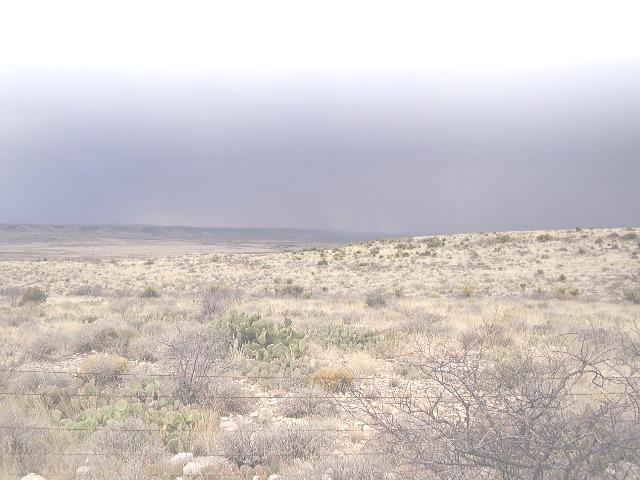
conference that some of the speakers had attended.
The lineup of speakers included some of the best-known names in Preterism: Kurt Simmons (who organized and hosted the conference), Don Preston, Ed Stevens, John Noē and Todd Dennis. All were previous contributing authors to Fulfilled! Magazine, but with the exception of John Noē, I had not met any of them. What a blessing it was to finally meet the individuals that I had been trading emails with for so long.
When Kurt’s promotional email stated that the conference grounds were situated next to the beautiful Pecos River, I figured that he was just “talking the place up.” Wrong again! I don’t know that I’ve ever
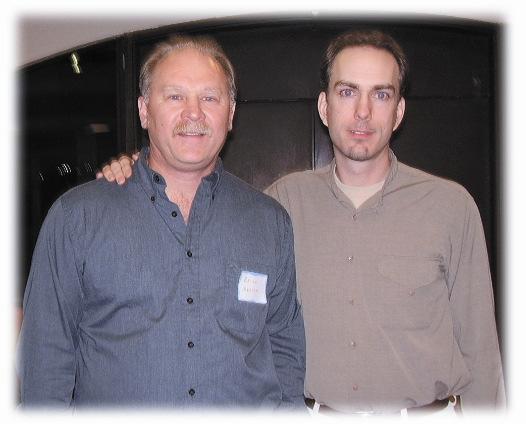
Brian L. Martin and Todd Dennis

Don K. Preston and Kurt Simmons

seen a river with water that color—it was almost turquoise. My wife and I had an extra day after the conference before our flight out of El Paso, so we spent some time walking along the paved pathway that meanders along both sides of the river, joined by a floating bridge. The conference center itself was a beautiful facility, with the main lecture room walled-in by windows overlooking the river.
Many of the attendees met on Friday morning and went to Carlsbad Caverns—I’ll let the pictures speak for themselves. The conference itself started Friday afternoon, and we heard from all five of the speakers. The morning and afternoon sessions on Saturday featured four speakers each, which made for


VOLUME 2, ISSUE 2
by Brian L. Martin

some information-packed days.
During the breaks between lectures attendees had a chance to meet one another, as well as chat with the speakers and purchase materials which they had available. I forget which attendee came the farthest distance, but my wife and I met individuals from Idaho, Texas and Georgia, among other places.
The conference was both audio- and videotaped, so you haven’t missed out if you were unable to attend. Check Ed Steven’s site, www.preterist.org, for CD’s and DVD’s of the conference. Of course, there’s nothing like being there in person, so make plans to attend next year’s conference.

Ed Stevens (R) discussing Scripture
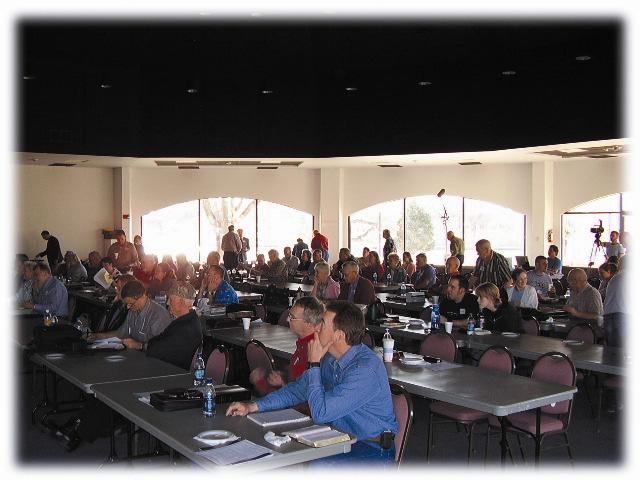

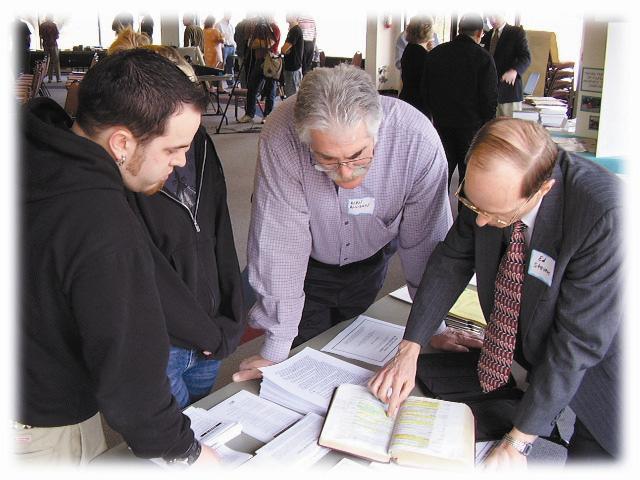
Studies in Redemptive History


Redemption—The “Big Picture”
by Ed Stevens

This article provides an overview of the plan of redemption revealed throughout Scripture. Some call it the “scarlet thread” that runs through the Bible. Others refer to it as “His Story” since all of Bible history relates to the plan, revelation, gradual development, and eventual consummation of redemption in Jesus Christ.
Someone recently shared an email in which his Futurist pastor insisted it is not legitimate to interpret the nature of fulfillment at the end time (Revelation) differently than the physically literal nature of reality at the beginning time (Genesis). While I agree somewhat with that principle, there are some interpretative problems that can develop when we take that approach. Just like it is possible to incorrectly force the pieces of a puzzle to fit together and get the wrong picture, so it is also possible to incorrectly interpret the nature of redemptive events at the beginning. Just as there is only one correct way to fit puzzle pieces together, there is also only one correct way to interpret scripture. And if we do not know at the beginning what the finished puzzle is supposed to look like, it will be much more difficult to put it together correctly. Seeing the big picture on the outside of the box before we begin is extremely helpful. However, God did not give mankind a multimedia presentation of His redemptive plan at the very beginning. Instead, He gave a promise in “mystery” (enigmatic) form—revealed gradually in bits and pieces in history.
We could debate why God did not just give us the big picture all at once at the beginning—so we would not have to scratch our heads trying to figure it out—but it seems that God wanted us to struggle with it in order to humble us, make us seek His face, and learn to trust and depend upon Him. But there is another reason.
Ten thousand years from now it will be even more tempting for humanity to dismiss Christianity as mere superstition of a pre-enlightened age. But the Bible relates a story which was developed inside verifiable history over a span of four thousand years. The story is too interrelated and systematic to be the product of deceivers or lunatics. God did it this way so that His redemptive plan could not be falsified on historical grounds, no matter how many years pass. For the redemptive plan to stand the test of time for all ages to come, it needed to be revealed and consummated inside history over such a long period (and in such a historically verifiable way) that there could never be any question about its authenticity. This is exactly what we find in the Bible. Only the “Ancient of Days” could accomplish something like that.
God’s plan of redemption was a “mystery” which was only unveiled partially and gradually through the Old Testament. This mystery was not only hidden from humanity in general, but it was somewhat obscure to God’s people and the angels as well:



As to this salvation, the prophets who prophesied of the grace that would come to you made careful searches and inquiries, seeking to know what person or time the Spirit of Christ within them was indicating as He predicted the sufferings of Christ and the glories to follow. It was revealed to them that they were not serving themselves, but you, in these things which now have been announced to you through those who preached the gospel to you by the Holy Spirit sent from heaven—things into which angels long to look. (1 Peter 1:10-12, NASB95)



They did not get the big picture at the beginning. God used his people to paint the picture slowly and gradually over the first four thousand years of human history. Only at the end of the redemptive drama did the big picture come into clear view. That is why I suggested that looking first at the nature of things at the beginning (without having the big picture at the end in view) may skew one’s interpretation of the nature of fulfillment at the end time. If you start off on the wrong path, you will end up at the wrong destination. If you know your destination you will know which path to take. In this case, it is the last things that we need to look at first, since the last things tell us how to fit the first things into the big picture. And the nature of fulfillment of the last things is more significant for our understanding of the whole redemptive drama than the nature of the first things. The New Testament tells us what the Old Testament was pointing to—Jesus Christ. So we need to see the big picture first before we start trying to put the Old Testament pieces together.
I appreciate Brian Martin’s emphasis on this in his book Behind the Veil of Moses. His comments on Paul’s teaching about this in 2 Corinthians 3:7-16 are excellent. Only at the end,
Studies in Redemptive History

when the veil of Moses is removed, do we see clearly enough to understand correctly God’s redemptive plan from its creation all the way to its consummation. You may be asking, “What does the big picture look like?” Here it is:





God made His plan for humanity in eternity before He created the universe. Then God created the Universe and all that it contains, including the first two humans, Adam and Eve, as well as the Garden in which they would dwell. God wanted man to live forever with Him in close fellowship, so He gave Adam a task to fulfill and guidelines to follow during his probation on earth in order to prepare him for his eternal life in heaven with God. But Adam and Eve ate from the forbidden tree and broke that fellowship, bringing condemnation and separation upon themselves and their posterity. This put man in a state of spiritual death before God, as well as doomed their physical bodies to suffer physical death and return to dust. Because God, in His holiness, could not bring the righteous dead into heaven until His plan of redemption was completed, He allowed Satan to imprison the conscious, disembodied souls of man
7.
8.
kind in Sheol (Greek: Hades). This was a temporary provision until a “seed of Eve” would come and “redeem” His elect from Satan and raise them out of Hades, giving them new immortal and incorruptible bodies, taking them to heaven to dwell with Him forever. All the events of the Old Testament were a tutorial designed to equip His people to recognize the Redeemer when He arrived, and to enable us to understand what He was accomplishing for us. Christ Jesus is that Redeemer, and the whole New Testament is the unveiling of “the rest of the story” (His Story) of God’s plan to buy back His people from eternal separation and condemnation, and to give them immortal life in His presence and fellowship forever.
In future issues we will focus on smaller pieces of the Redemptive Puzzle. But it was important here, before attempting to fit the pieces together in future articles, to see what the big picture is supposed to look like when we are finished.
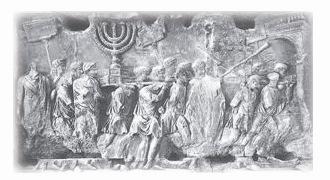
God’s plan of
redemption was
a “mystery”
which was only
unveiled
partially and
gradually
through the Old
Testament.
Edward E. Stevens is President of IPA 122 Seaward Ave. www.preterist.org Bradford, PA 16701-1515 preterist1@aol.com (814) 368-6578 Our Mission: To glorify Jesus Christ and serve the Christian community as the leading publisher and distributor of conservative Christian Preterist information.


F ULFILLED !
Birks (from p. 7)
ever, our context for understanding the verse under discussion does not merely contain a few verses before or after 2 Peter 3:8. Peter laid the ground work for his teaching on the timing of the Second Coming long before writing his second epistle. Notice that Peter’s statement about “a thousand years” is in response to a question—one that is defiantly posed by those whom Peter calls “scoffers.” Verse 3 states: “. . . knowing this first of all, that scoffers will come in the last days with scoffing, following their own sinful desires. They will say, ‘Where is the promise of his coming?’” Going back to verse 1, we begin to understand the meaning of verse 8 and the “thousand years” statement. In order to refute the scoffers and their defiant question in verse 4, Peter states that he had written another epistle previously to this same group of recipients, namely, the first epistle of Peter: “This is now the second letter that I am writing to you, beloved. In both of them [1 and 2 Peter] I am stirring up your sincere mind by way of reminder . . . .” (It is true that Peter does not directly and irrefutably tell us that he is referring to his first epistle (i.e., 1 Peter); but if he is not, then to what could he possibly be referring? Since we have both 1 Peter and 2 Peter preserved for us as canonical Scripture, let us, for argument’s sake, receive the proposition that here, in 2 Peter 3:1, he is referring to the first epistle that bears his name.)
At the end of verse 1, Peter states that he is, by what he is about to say, attempting to “remind” his readers of something that he had stated to them in his first epistle. In 2 Peter 3:2, he tells his readers to “remember the predictions of the holy prophets and the commandment of the Lord and Savior through your apostles” concerning Christ’s Second Coming. (We know this because of the immediate reference to the dispute over the timing of the Second Coming being “scoffed at” by the scoffers in verse 4.) Thus, both Old and New Testament prophets prophesied concerning the timing of Christ’s Second Coming, and the Lord Jesus Himself taught regarding it.
Next, Peter directs us to the timing of the Second Coming in verse 3: “. . . knowing this first of all [‘first of all,’ meaning that what he is about to say concerning the timing of Christ’s Second Coming is of ‘first’ importance], that scoffers will come in the last days with scoffing . . . .” Clearly, the Parousia was predicted to occur within the period of time which Peter calls “the last days.” My intent is not to discuss the meaning of the term “last days” (the first-century Jews believed it represented the last days of the Mosaic system and the beginning of the reign of the Messiah). Rather, it is my intent to establish that what Peter called the “last days” was, in fact, the same generation in which Peter lived and ministered. Thus, the scoffers were retaliating against the first-century teaching that Christ’s coming was certainly about to occur in their lifetimes. This is why it is important to understand why Peter made reference to “reminding” his readers about what he had stated previously to them in his first epistle concerning the timing of the last days. Peter makes it abundantly clear in 1 Peter 1:20 that the last days were the time in which Christ himself was first manifested in the flesh, carried out His ministry, sacrificed Himself on Cal
vary’s cross, and was resurrected bodily from the grave. According to 1 Peter 1:20, “He [Christ] was foreknown before the foundation of the world but was made manifest in the last times for your sake . . . .” The fact that Christ was upon the earth during what the Bible calls the last days or the last times is made abundantly clear from numerous passages (Gen. 49:1, 10 and Num. 24:17; cf. Mt. 2:1-2; Heb. 1:2, 9:26; and 1 Jn. 2:18). The scoffers’ scoffing was yet another sign that those alive in the first century were, in fact, living in the last days. Clearly, Peter believed that he was living and writing in the last days. Under the inspiration of the Holy Spirit, Peter now states in verse 4 that a person’s “sinful desire” asks the defiant question, “Where is the promise of His coming?” This is important: if the scoffers are asking the question of “where” the promise of His coming is, then this indicates that the scoffers were responding to the first-century teaching that Christ’s coming was “soon,” “at hand,” and “about to be.” This very important fact is missed by all Futurists who deny that the New Testament teaches a first-century Parousia. They are so livid in their denial of the biblical teaching that they fail to ask themselves the allimportant question: “Why are the scoffers scoffing at the promise of His coming?” The simple answer is that they understood what Christians were proclaiming. However, because several years had passed, and the Temple was still standing, they felt that the promise of His coming had been proved false. The fact that they were scoffing verifies that the first-century church proclaimed a first-century Second Coming of Christ! No other explanation will suffice as to why the scoffers were scoffing at the first-century timing of Christ’s coming.
With the above in mind (and without belaboring verses 5- 7), let us now answer the question at hand: “What does 2 Peter 3:8 mean?” While Peter refers to the fact that, to the Lord, a day is as a thousand years and a thousand years is as a day, Peter is not saying that time is a meaningless concept to God and that His apostles and prophets can say that Christ will come soon, or that His coming is at hand, while it is still thousands of years away. Rather, through the God-honoring method of proper biblical hermeneutics, we can discover precisely what Peter means when he refers to a “thousand years.” The answer to the meaning of verse 8 is found in verse 9: “The Lord is not slow to fulfill his promise . . . .” Verse 8 simply means that God and His promises are not affected by time as it affects us who live “under the sun” (Ecclesiastes 1:9). Unlike God, we are bound by the tick-tock of the clock. When it comes to God fulfilling His promise of a first-century Parousia, He is not bound by the whims and ways of evil, unbelieving man. Note that, in verse 4, the scoffers asked in their defiant challenge to the confident expectation of a first-century Parousia, “Where is the promise of His coming?” And now, in verse 9, Peter answers his challengers directly: “The Lord is not slow to fulfill His promise . . . .” Of what “promise” is Peter speaking? The only “promise” referred to in this context is the promise of Christ’s expected firstcentury coming that was last mentioned in verse 4. Peter says that to question the validity of what the early church was
VOLUME 2, ISSUE 2
preaching concerning the first-century expectation was nothing less than sinful (verse 3b). Since this is the “only” Second Coming to which the New Testament documents testify, then it is unreasonable and without biblical foundation to say that the scoffers were referring to anything else other than the proclamation of an expected first-century Parousia.
We are to understand that the phrase of a thousand years being as a day to God was not given in order to teach that the Second Coming could happen at any time or that time is meaningless to God relative to the Second Coming. Rather, we are to understand that verse 9 teaches us that, when God states what He does concerning the thousand years, it is meant to proclaim that the Lord is not “slow” (as the scoffers pronounced) when it comes to fulfilling His promise of Christ’s first-century Parousia. Why would someone “scoff” at a promise of a Second Coming that was still thousands of years in the future? They could only “scoff” at a Second Coming that was proclaimed to be at hand!
Having settled what the text says and means, we come to our final question:
Birks (from p. 14)
3. What am I going to do about it? The original intent of Scripture is not fully realized unless it is applied to one’s life. The question that remains for every properly exegeted passage of Scripture is: “What is this text demanding of me? What am I required to do with this information of a first-century expectation of the Parousia?” How about doing for others what I am doing for you, the reader, right now? Take this information, go over it and over it until you digest it thoroughly, and then ask God to send people to you who struggle over 2 Peter 3:8. You will be amazed at the number of folks He will send to you so that you might glorify Christ’s word in defiance of those who, according to their sinful desires (2 Peter 3:3), continue to declare a still-future-to-us Second Coming that is foreign to the text and meaning of Scripture.
Dr. Kelly Nelson Birks is the author of “The Comings of Christ” and “The End of Sin.” He can be reached at:
Email: birks10@hotmail.com
measures in His dealings with men, and that His mode of reckoning is ambiguous and variable, is not only unreasonable to me—it is immoral. To make such a suggestion implies that a day may mean a thousand years or a thousand years may mean a day. If this is so, then there is no possible way prophecy can be reasonably interpreted.
The Scriptures themselves offer no reason to use such a method of interpretation. God is faithful and He gives no reason to believe that His dealings with men are anything less than consistent with His faithfulness. It is clear to me that Peter’s reason for quoting Psalm 90:4 is to assure his readers that what Jesus predicted in Matthew 24 was about to unfold in their lifetime. Peter was assuring his readers that the Day of the Lord was the Day of Judgment predicted by Jesus and that it was indeed coming upon that generation. In the balance of this chapter, Peter uses apocalyptic language (cosmic imagery) to explain how the Old Covenant age was coming to an end and
Henry (from p. 7)
how the New Covenant age was soon to appear. Peter was, in reality, speaking about the destruction of the Jewish leadership or government, which was fulfilled when the fires of war came upon the nation shortly after he wrote. All these things were to come in the generation that was contemporary with our Lord. The time text makes this very clear. As John Noē says, “Why not just take Jesus at His word?”
Jimmy Henry is the author of The Glorious Return of Christ. He can be reached at:
Email: Jahenry@1starnet.com
Mailing Address: 344 Hickory Creek Dr Sulphur Spring, TX 75482
Preston (from p. 9)
millennial doctrine that the church is a “temporary interruption” of God’s kingdom plan. Unless one can demonstrate that Paul had some other goal of the ages in mind, than the Church, then there is not another destiny of the ages other than the Church. This means that the New Creation that had broken into the Old World was about to be perfected, not terminated. And this means that the gospel of justification by faith, that condemns unbelief, immorality, and rebellion, did not pass away at the Parousia either.
The Body of Christ was the eternal purpose of God, and the goal of the previous ages. Any doctrine that depreciates the honor and the glory of the church is a Christ dishonoring doctrine. Further, it flies in the face of Paul’s statement that the Church was the goal of all previous ages.
Prophecy Quiz

Behold, the LORD rides on a swift cloud, and will come into Egypt; The idols of Egypt will totter at His presence, and the heart of Egypt will melt in its midst. (Is 19:1) The above verse is describing:
A. Every Egyptian seeing God on a literal cloud as He rides in judgment against their nation.
B. God’s judgment of Egypt described in figurative, apocalyptic language.
Few, if any, students of the Word believe that God was actually seen on a cloud by anyone during His judgment against Egypt. In fact, most have no difficulty in acknowledging that while there was a literal judgment against Egypt, this apocalyptic description is not to be taken literally. Why, then, do we insist on a literal interpretation for the following verse? Jesus said to him, “It is as you said. Nevertheless, I say to you, hereafter you will see the Son of Man sitting at the right hand of Power, and coming on the clouds of heaven. (Matt 26:64) When the high priest heard Jesus say this, he tore his clothes and accused Jesus of blasphemy. Why? Because he knew what coming on the clouds of heaven meant—that Jesus was claiming to be God, and would come in judgment against them. The Jewish Council, before whom Jesus spoke these words, knew that cloud-comings were woven throughout the Old Testament Scriptures. Did they deem Him deserving of death because He claimed He could ride on a cloud, or because He had just stated, in language which all Jews understood, that He was God and would return to judge them? Surely the latter is the case. Why, then, do we insist on interpreting this cloud-coming judgment of Christ in a literal fashion, instead of in the manner of Old Testament cloud-coming judgments?
Preterism . . . it’s about time! It’s about the time Jesus told His disciples that He would return—this (His) generation! It’s about the time the New Testament authors told their readers Jesus would return—soon, near, at hand, shortly! It’s about time for a scriptural explanation other than delay! It’s about time for a “last days” view that doesn’t conjure up gaps and parenthetical ages!



